Learning music makes learning language easier for children
Regarding music in language learning and given some great 21st century research and thought leadership, we can draw the conclusion that music and language are in effect two sides of the same coin. Except in the case of babies, where singing and talking are one and the same thing! Babies are processing sound, plus all the facial expressions and gestures you make when you talk or sing to them.
It’s easy to understand that the obvious benefit of music for babies and young children is in language development. That’s because when we think of music we immediately think of singing — and songs have words.
People everywhere naturally sing to babies. Sandra Trehub has proven this. Her work as the long-standing Professor (now Emeritus) of the Infant and Child Studies Centre at the University of Toronto Mississauga includes many facets. As she writes in her bio:
I conduct other research on singing to infants in the course of care-giving, an activity that seems to be universal. This research has a field component as well as a laboratory component, the field work involving the collection of samples of singing from various national and ethnic groups locally and abroad. One goal of this work is to document the similarities and differences in the nature of singing to infants across different languages and cultures. Another is to determine the effect of such singing on infant listeners. 1
But let’s look at the whole of early childhood and not just at the babies. We need to keep up that singing throughout toddlerhood, preschool and the early years in school. Why? It’s because one of our main goals is to develop language by encouraging the child to learn the words to songs and to join in. However, there’s far more to the story of the sweetheart relationship between music and language than the obvious link to song lyrics. Intrigued? Keep reading!
Both music and language are made of sound
When we delve more deeply into the latest publications from the neuro-scientific community, we see that the link between music and language is about the human relationship with sound. Here’s a quote from the 2015 Handbook of Clinical Neurology written for clinicians such as speech pathologists; in their chapter on the similarities and differences between music and language, researchers Nina Kraus and Jessica Slater say:
Music and language are two sides of the human communication coin: while language is effective for semantically precise communication, the great strength of music lies in its facilitation of social bonding and shared emotion. 2
At the heart of the matter is the fact that music and language are both rooted in sound. Remember the babies, they don’t know what the words mean but they still love the sound of the songs.
Children’s innate receptivity to music from a very young age … reinforces the idea that musical structure is rooted in fundamental characteristics of sound and sensory perception. 3
The second major similarity is that both are forms of communication among people. In fact, Steven Mithen, Professor of Archeology at Reading University and pioneer in the field of ‘cognitive archeology’, has come to the conclusion that music and language are indeed based in one root system, once again like two faces of the same coin.
The fact that the music and language systems in the brain share some modules is … to be expected given the evolutionary history I have proposed because we now know that both originate from a single system. 4
We also have another similarity in that these twin forms of communication follow rules. By following the rules we can use basic building blocks to make complex structures. This musical and linguistic inventiveness pervades all cultures. Sandra Trehub (et al.) put it this way:
Music is universal, transmitted through generations, usually performed in the presence of others, and of extreme antiquity. 5
What is dissimilar in music and language?
Now we start to diverge — what are the basic differences between music and language? Music is better than language at conveying emotion. One reason for this is within the actual properties of sounds and how our ears take them into the brain. There are many aspects of music that evoke an emotional response such as tempo, rhythm, timbre, texture, dynamics, melody and harmony.
Children are born able to receive music and perceive consonance and dissonance. What does that mean? Consonance occurs when musical sounds are ‘harmonious’ and dissonance occurs when sounds contain what some consider as ‘noise’ and many people find that unpleasant. An example of consonance would be the three notes C E and G played at the same time on a keyboard. This cluster of sounds has simple frequency ratios making it an easier task for the auditory system to process. An example of dissonance would be the simultaneous playing of the three notes C, C# and D. This cluster of sounds would contain a lot of ‘noise’ and would take more work for the auditory system to process.
Children usually don’t like dissonance in music they hear. It stimulates a fear response. They think something is terribly wrong. Sorry all you music teachers who are jazz and art music lovers! You’re going to have to be very conscious of this when selecting your music appreciation set list.
So music— the connotative sound system, is better at conveying emotion. But it is not good at conveying a clear-cut idea. Kraus and Slater tell us that is the job of language — the denotative sound system:
language can be used to convey precise semantic content between individuals 6
The job of music is not to get an exact message across but to secure social bonds between people. Music-making amongst individuals lets us know that we’re all in this together. Kraus and Slater wrap it up neatly when they say:
language enables articulation of what is within us, whereas music strengthens what is shared between us. 7
We have recent proof that music in language learning makes the learning easier
From another direction, there’s more good news for us educators coming from Seattle where two researchers, Christina Zhao and Patricia Kuhl, designed a study where a musical intervention, namely teaching waltz time to 9 month old babies, improved their ability to learn speech.
The intervention thus enhanced temporal structure processing not only in music, but also in speech, at 9 mo of age. We argue that the intervention enhanced infants’ ability to extract temporal structure information and to predict future events in time, a skill affecting both music and speech processing. 8
You can read more about that study in my blog — speech-music-link.
What’s the take-away from this discussion of a few recent papers and books? I think it’s that we simply must give our babies and young children every opportunity to experience and learn music because music and language are so closely linked in human development. Giving them daily opportunities is not just good for music’s sake but also for the sake of their facility with language. Learning music makes learning language easier for children. That’s what I’d like you to share with your colleagues and families — the simple message that learning music makes learning language easier for children. Make an effort to join your language and music pedagogy today.
Get a music curriculum that works
References
- Professor Emeritus Sandra Trehub Infant and Child Studies Centre at the University of Toronto Mississauga
- Kraus, N and Slater, J. Music and language: relations and disconnections. Ch 12 in Handbook of Clinical Neurology, Vol. 129 (3rd series) 2015 (p216)
- Kraus, N and Slater, J. Music and language: relations and disconnections. Ch 12 in Handbook of Clinical Neurology, Vol. 129 (3rd series) 2015 (p208)
- Mithen SJ 2005. The singing Neanderthals: The origins of music, language, mind, and body. Harvard University Press, Boston. (p274)
- Trehub SE, Becker J, Morley I. 2015 Cross-cultural perspectives on music and musicality. Trans. R. Soc. B 370: 20140096. (p1)
- Kraus, N and Slater, J. Music and language: relations and disconnections. Ch 12 in Handbook of Clinical Neurology, Vol. 129 (3rd series) 2015 (p208)
- Kraus, N and Slater, J. Music and language: relations and disconnections. Ch 12 in Handbook of Clinical Neurology, Vol. 129 (3rd series) 2015 (p208)
- Zhao, T. Christina and Kuhl, Patricia K. Musical intervention enhances infants’ neural processing of temporal structure in music and speech. Published online before print April 25, 2016, doi:10.1073/pnas.1603984113__PNAS May 10, 2016 vol. 113 no. 195212-5217. (p5212) Proceedings of the National Academy of Sciences of the United States of America
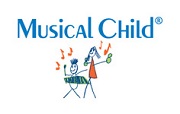
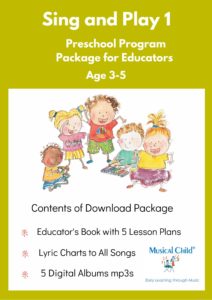

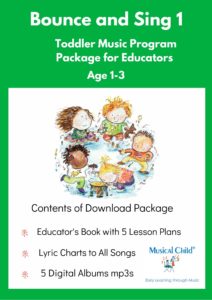
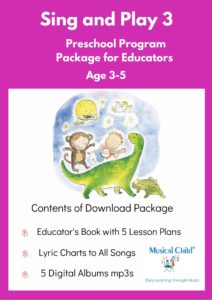
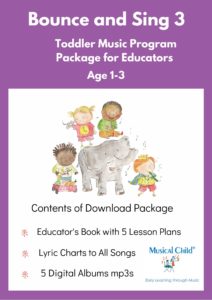
I’m missing your wisdom. And what brought that to mind was reading your blog. I loved it. Beautifully written, easy to understand and whetted my appetite for more. I’m totally with you on the social emotional intelligences being enhanced through music. Talk about harmony and connectedness — the world needs more and the little ones are our future. Thanks Carol for reminding yet again.